- Home
- Multimedia
- Photo Gallery
- FIFA World Cup 2022: Greatest show on Earth returns
FIFA World Cup 2022: Greatest show on Earth returns
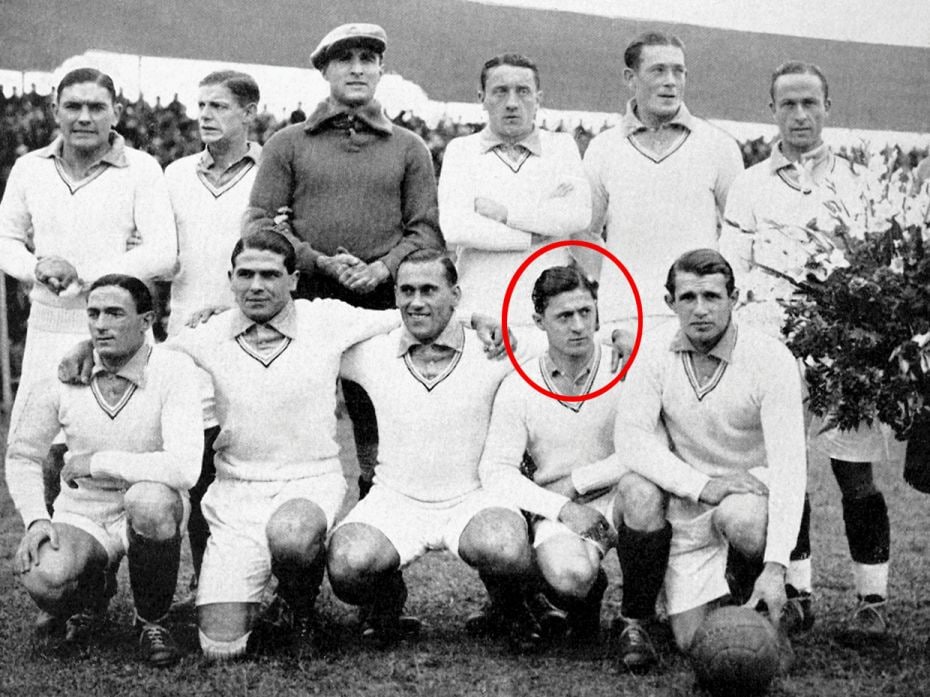
Image by : PI Images / Alamy
1930
A goal that set the ball rolling
In the nineteenth minute of the inaugural world cup’s opening game in Uruguay, Frenchman Lucien Laurent collected a high cross from the right wing and let it rip past the Mexican goalkeeper Oscar Bonfiglio, buckling the net. Lucien earned a special place, marking the first goal ever scored at the 1930 World Cup.
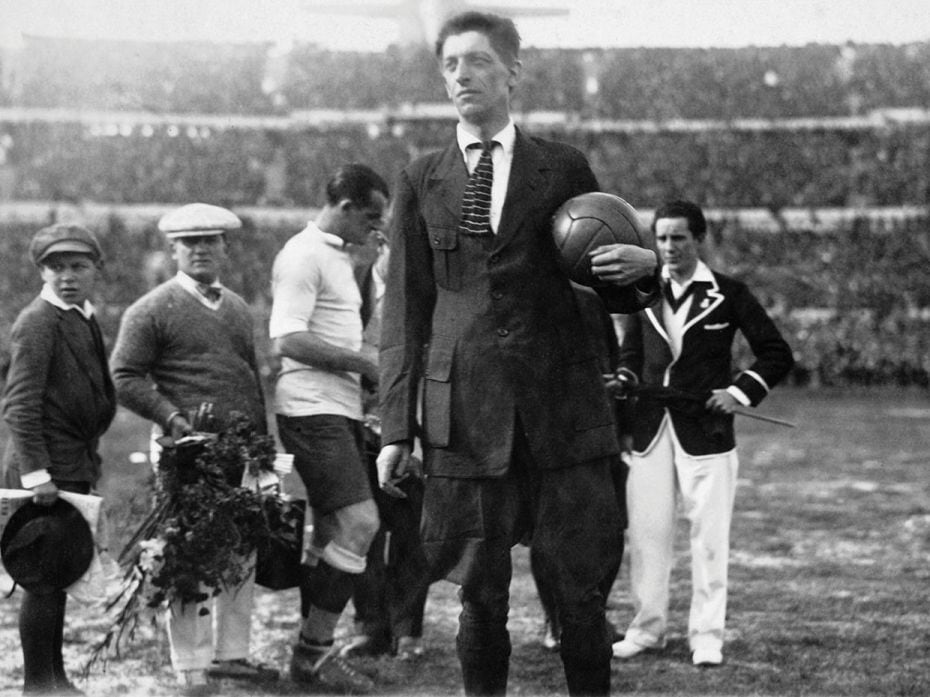
Image by : PA Images / Alamy, Bob Thomas / Popperfoto via Getty Images
1930
Trust your own
The final brought grudging neighbours Uruguay and Argentina to face off in an air of mutual distrust in the Uruguayan capital of Montevideo. So much so that one half of the match was played with an Uruguayan ball and the other with an Argentinian one.

Image by : Alamy
1938
A black salut to the Manifesto
Italian team’s unpopularity was plainly evident by the protests that ensued when they arrived in France for the 1938 World Cup. Aware of the game’s cross-national appeal and powers of propaganda, dictator Mussolini was determined to make a show of his men’s skills. Coach Vittorio Pozzo’s training camps were more akin to the armed forces, encapsulating fascism’s single-minded, uncompromising approach. When Italy won the final, retaining the Cup, the men donned black shirts and gave the fascist salute. An urban myth is Mussolini’s telegram to the boys simply instructing them to “ Win or Die”.

Image by : Popperfoto via Getty Images
1950
The Miracle on Grass
The USA team were full of semi-pro players: Some were dishwashers or letter carriers, one even worked at a funeral home. They only had one training session before leaving for the tournament in Brazil. And they came up against England, a renowned team known the world over then as the “Kings of Football”. In the 37th minute, Joe Gaetjens dived headlong into a long range shot and grazed it past the English for a win. Experts concur the match as the biggest sporting upset of all time.
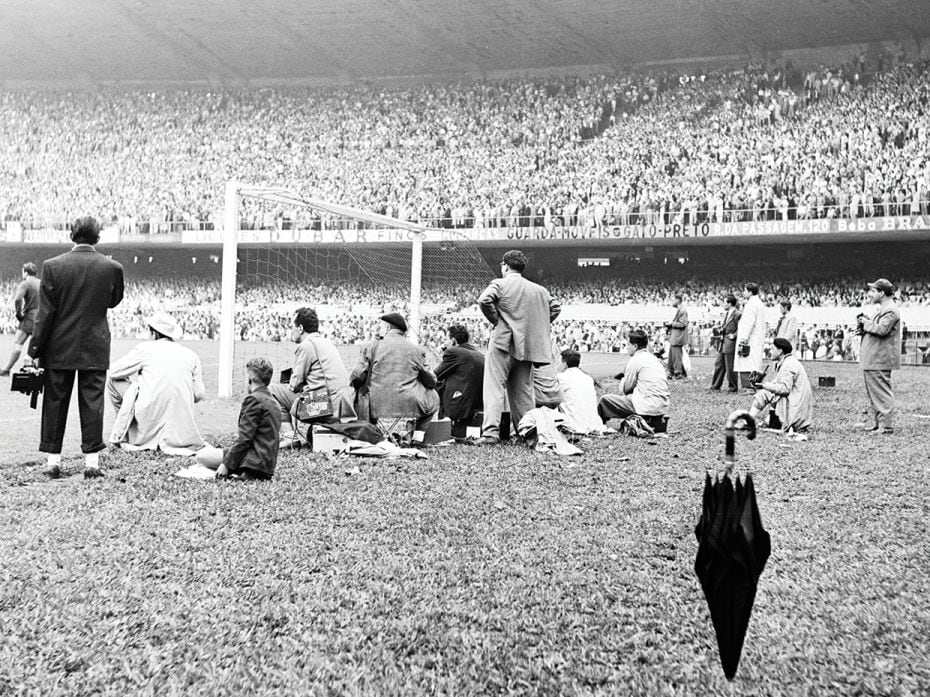
Image by : Popperfoto via Getty Images
1950
A record disappointment
A record 173,850 tickets were sold for the Brazil-Uruguay fi nal at the historic Maracana stadium, but the unofficial accounts estimate it over 200,000. It is an all-time record for attendance ever, only to witness disappointment when Brazil lost the fi nal 1-2. A word was invented to describe the disappointment: “Maracanaço” or the blow of Maracana.

Image by : Jean-Pierre Grisel / RDB / ullstein bild via Getty Images
1954
A gale of goals
It was a 12-goal quarterfinal thriller in Lausanne, a record for total goals scored in a single World Cup match. And how Austria and Switzerland shored up a 7-5 score in the 40°C scorcher of a heat that day is a daunting thought. Austrian goalkeeper Kurt Schmied suffered from hyperthermia early in the match, quickly allowing the first three Swiss goals, before being assisted by the Austrian masseur while in play.
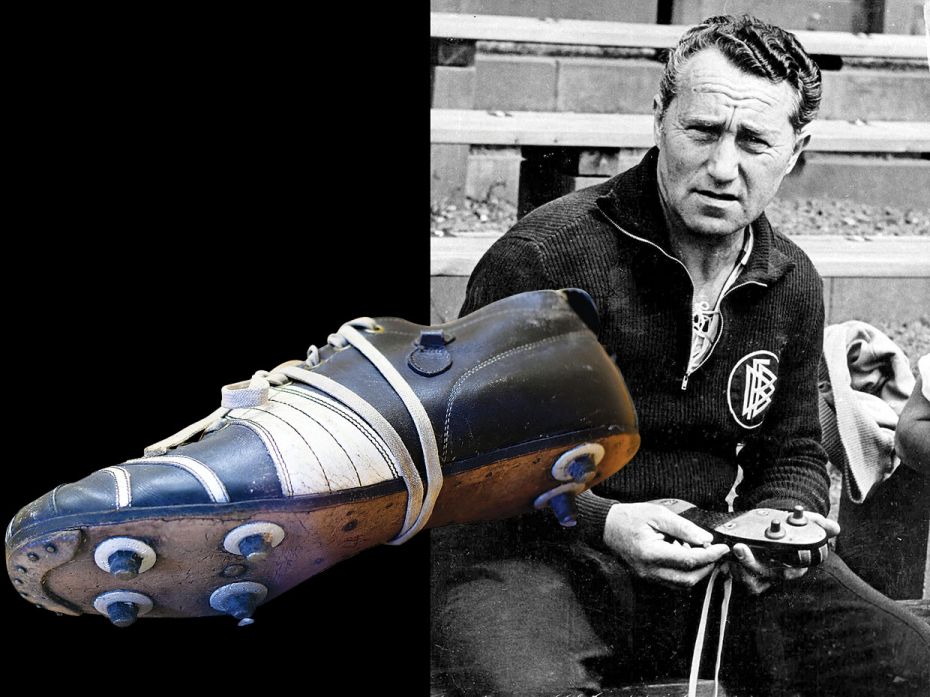
Image by : Ullstein bild / ullstein bild via Getty Images; Stud boot:Henning Kaiser / picture alliance via Getty Images
1954
The stud boot
The design theory behind football boots was elementary: They should be primarily protective, to shield bones from the weight of a heavy leather ball. When Germany opted for Adidas boots for the ’54 World Cup, manufacturer Adi Dassler refined the boots, making them lighter, with longer screw-in studs that could counter waterlogged pitches better. The result was ‘ the Miracle of Berne’, underdog Germany’s clinching its first World Cup title, and the shoe’s mythical status.
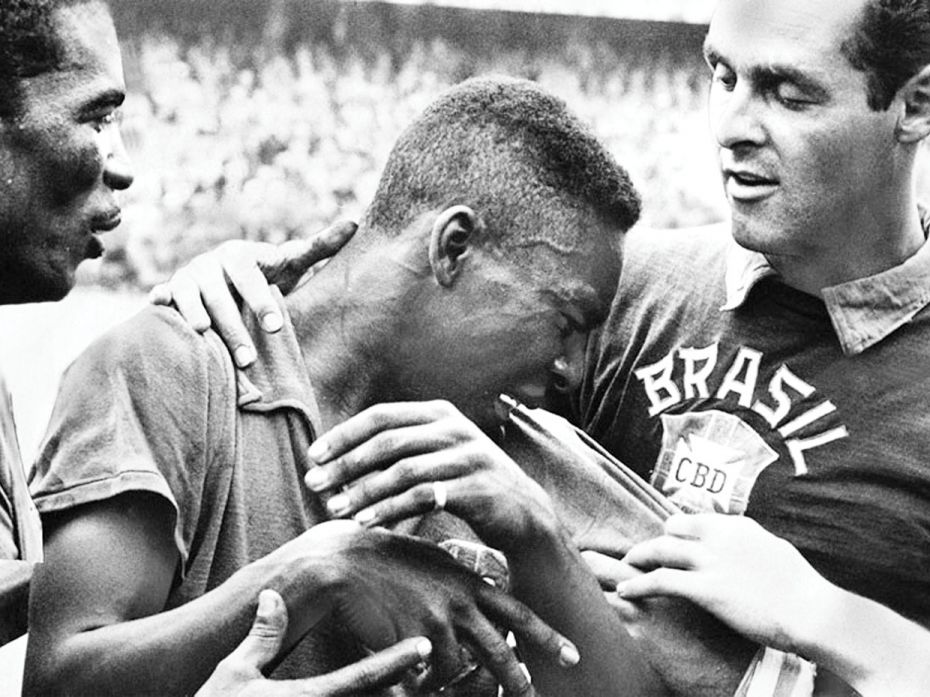
Image by : Alamy
1958
A brace for Pele
When Pele stepped onto the ground in the World Cup final against Sweden, he was 17, an age when one couldn’t legally drink alcohol. When he stepped off, he had scored two goals in the victorious final, crying as he lifted the trophy, cementing the moment into soccer lore.
By the end of his career, Pelé would win three FIFA World Cups with Brazil, the most wins of the World Cup by any player.
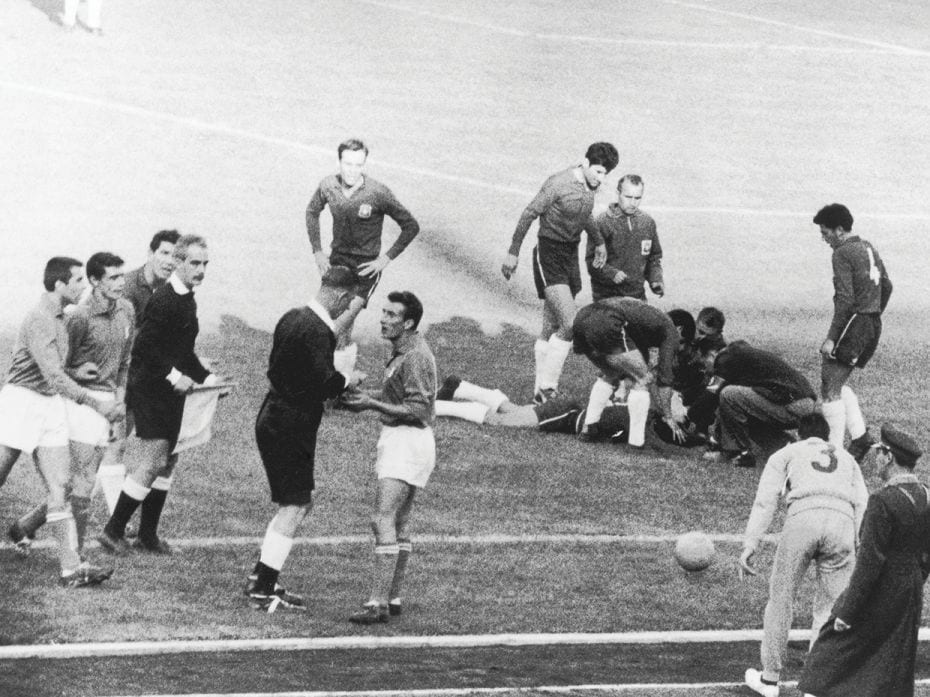
Image by : Keystone / Hulton Archive / Getty Images
1962
The Battle of Santiago
The first time that hosts Chile and Italy played is universally agreed as the ugliest, most vicious and disgraceful in soccer history. With a fanatical support, hosts Chile could not afford to lose. The Italians had to win this match to stay in the competition. From the start, Chileans poked and kicked and provoked and spat in the faces of Italians. The Italians retaliated and the pitch quickly became a battlefield. The match featured numerous punches, a broken nose, two red cards, and riot police invading the pitch three times. It was less a World cup and more a World war.
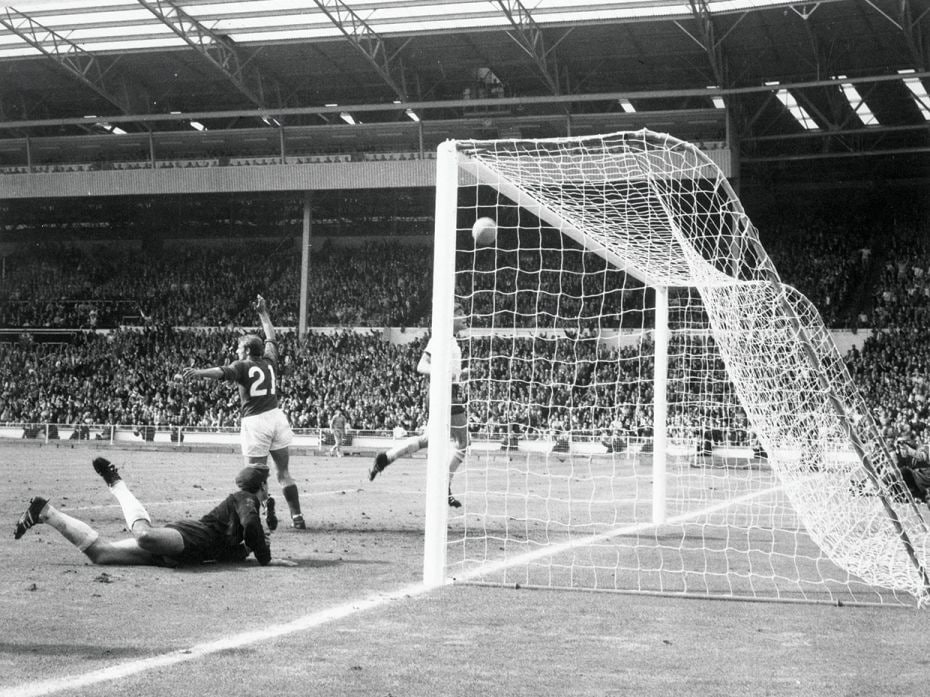
Image by : Evening Standard / Getty Images
1966
Crossed the line?
It’s the extra time at the 1966 final and the hosts England and Germany are tied at 2-2. Geoff Hurst’s furious right foot blazed past the German goalkeeper, hit the underside of the crossbar, hit the ground and bounced out of the goal-line. Did the ball cross the line? The referee, after consulting his linesman, awarded the goal. Subsequent studies and simulations have shown that it may have not. England won the World Cup, the only one to this day.
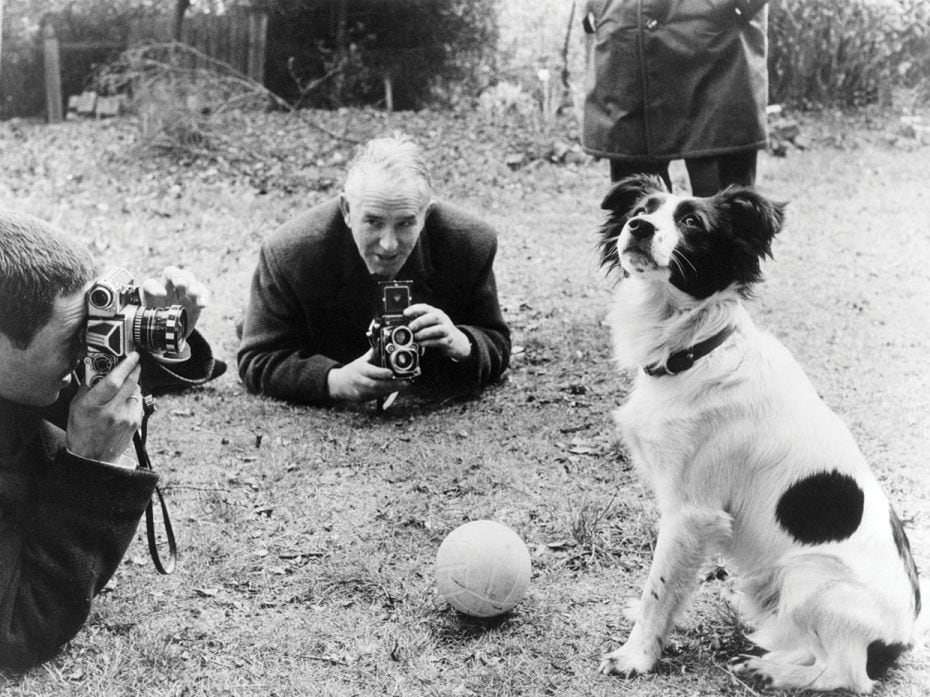
Image by : DB dpa / picture alliance via Getty Images
1966
Sniffing the Cup
In early March of 1966, three months before the World Cup kick-off, The Jules Rimet Trophy had been displayed in a glass case at a stamp exhibition in Westminster, England, with two guards on hourly checks. On the morning of 20th, between the regular tour of inspection at 11 am and midday, the cup was stolen. Two nights later, a dockworker and his collie Pickles were walking in Southeast London when the dog sniffed out a parcel in a newspaper, which turned out to be the trophy. Pickles briefly became a national hero, appeared on TV and in some movies.
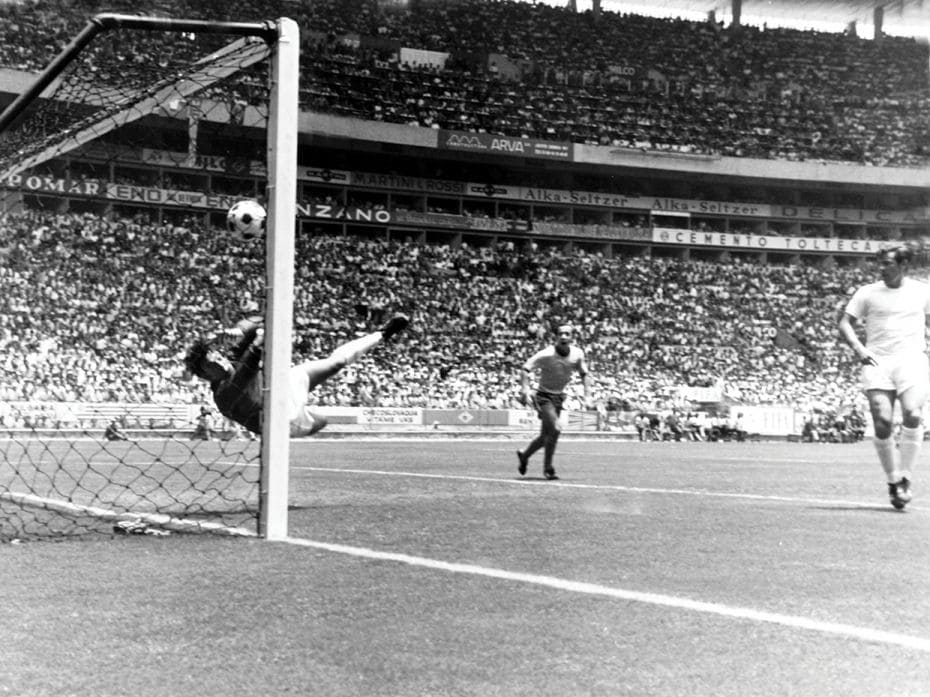
Image by : Allsport Hulton / Archive
1970
A miraculous save
For millions, it was a treat to watch the ‘save of the century’ in colour. In the first-ever World Cup to be televised in colour across the globe, the legend Pele’s downward header was destined for England’s net. Until goalie Gordon Banks chose to dive backwards, moving so far and so fast to his right, instead of forward, to fingertip the ball up and over. Pele, who was sure he had scored, was left transfixed. It triggered a friendship between them for the years to come.
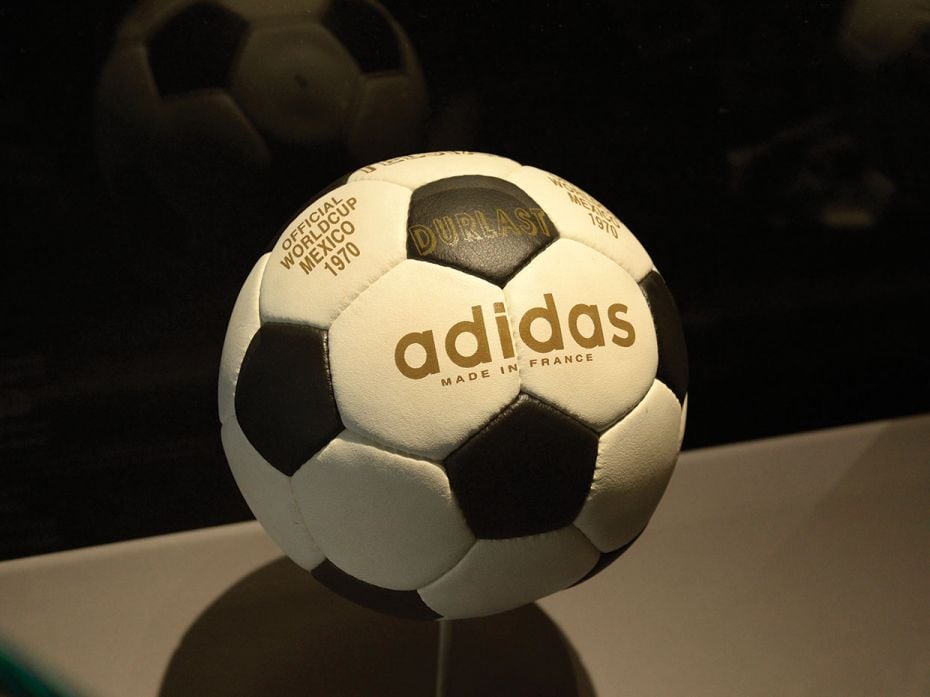
Image by : Albert Foss / ullstein bild via Getty Images
1970
Satellite themed ball
Adidas introduced the Telstar ball at the 1970 World Cup, with the now-familiar truncated icosahedron for its design, consisting of 12 black pentagonal and 20 white hexagonal panels. It was inspired by the 1962 Telstar communications satellite, which was roughly spherical and dotted with solar panels, visually similar to the football.The 32-panel design of the ball, based on the work of Eigil Nielsen, is now a popular culture classic.
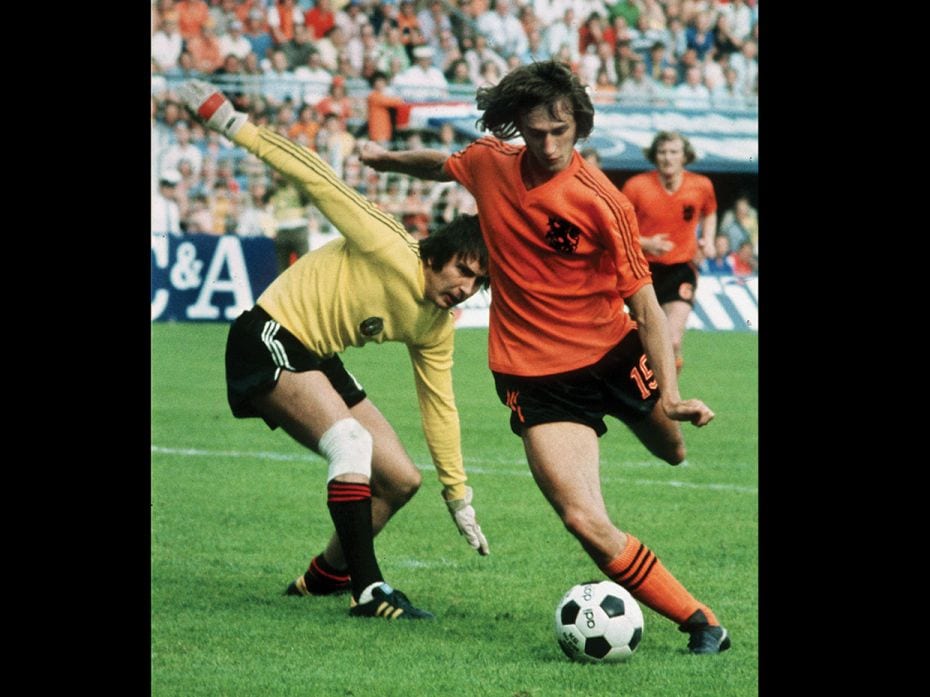
Image by : Heinz Wieseler / picture alliance via Getty Images
1974
The U Turn
One of football’s most famous pieces of skill had its premiere in this game between Netherlands and Sweden at the 1974 World Cup. Marked by a Swedish defender and with his back to the goal, Johan Cruyff seemed to have few options, but famously swayed one way, knocked the ball backwards, swivelling his entire body around and took off, leaving behind the defender, and create a soccer lore called The Cryuff Turn.
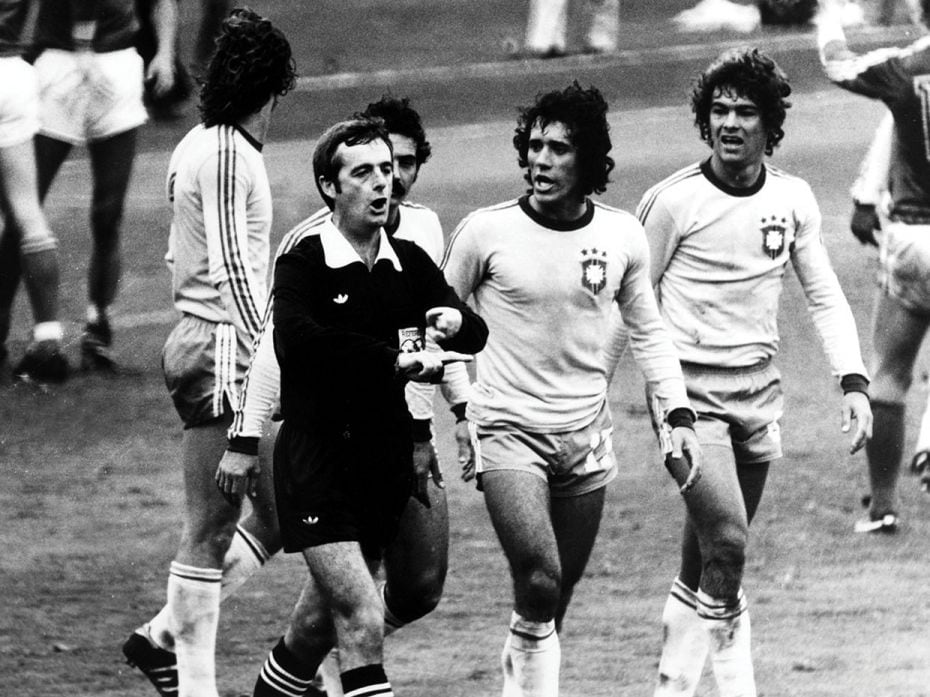
Image by : Popperfoto via Getty Images
1978
Only four-tenths of a second too late
Clive Thomas is now best remembered for “probably the most controversial decision that any referee has ever made”. With six seconds of stoppage time played, Thomas blew his whistle signalling the match’s end at 1-1, a moment before Brazil’s Zico scored their winner to beat Sweden. It was a fraction of a second too late–a decision which reverberated around the world.
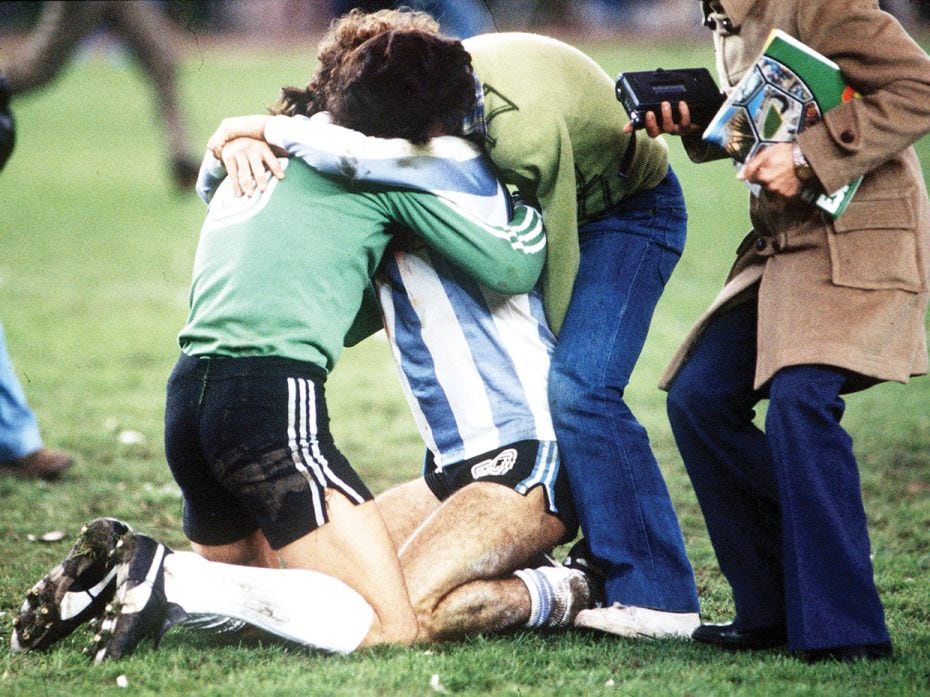
Image by : Popperfoto via Getty Images
1978
The heart’s embrace
After Argentina claimed their first World Cup by beating Holland in 1978, Alberto Tarantini and Ubaldo Fillol kneeled in an embrace, hugging and crying when an adoring, armless fan raced onto the pitch to join them in an hug.
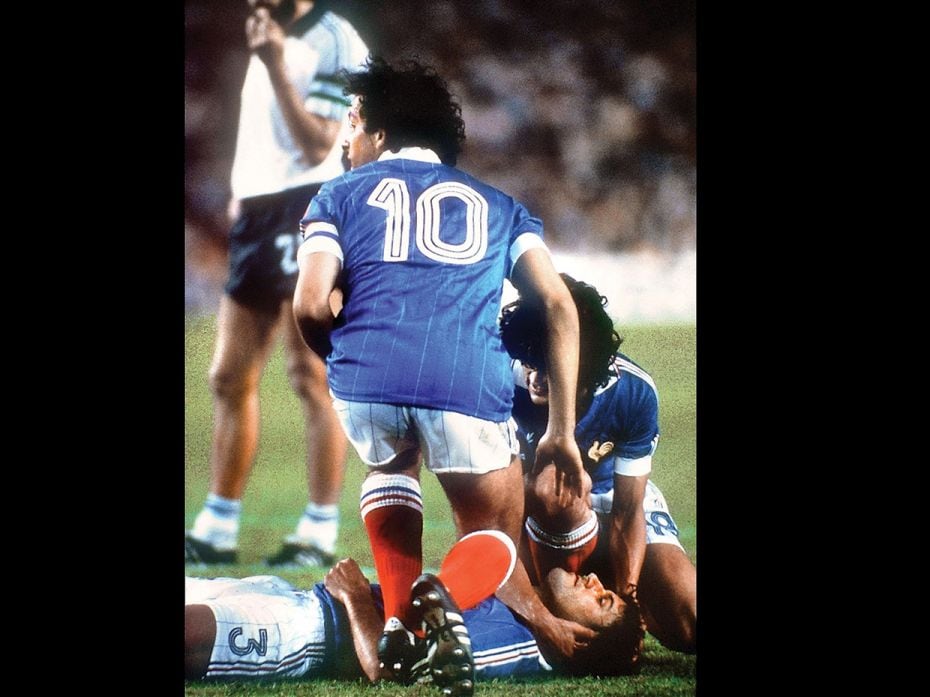
Image by : Staff / AFP
1982
Brutality unpunished
With the scores tied at 1-1 in the semi-final, French substitute Patrick Battiston was through for a likely goal when German keeper Harald Schumacher smashed into him. Battison lost three teeth, had a broken vertebra and needed oxygen on the pitch. Amazingly, Schumacher escaped unpunished.
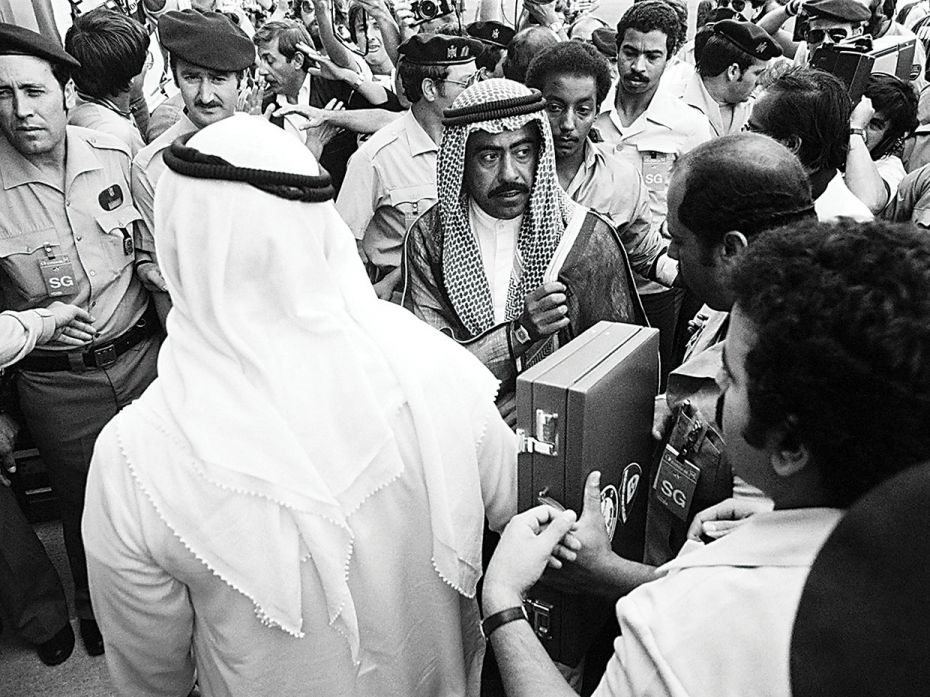
Image by : Jean-pierre Prevel / AFP
A Prince reigns
It was a debut World Cup appearance for Kuwait in Spain in 1982. France were leading 3-1, when a whistle was heard from the stands. Thinking it was the referee’s, Kuwaiti defenders slowed down, and France promptly scored one more. Disgruntled by the perceived injustice against his football team, Kuwaiti FA president Prince Fahad rushed onto the pitch in protest and threatened to withdraw his team from the Cup. In a bizarre decision, the referee gave in and disallowed the goal.
Photo Credit:
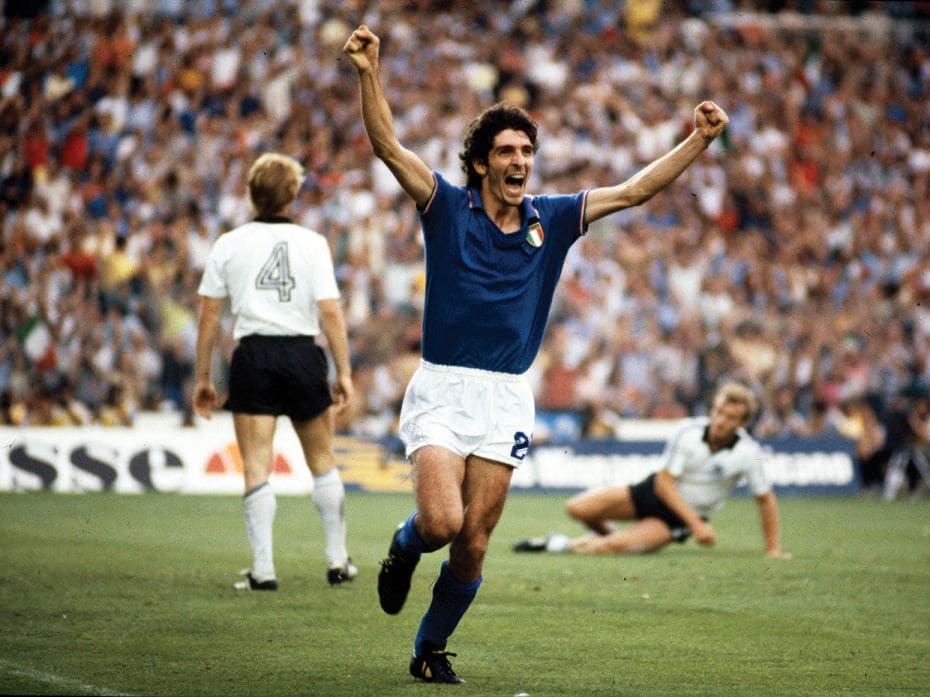
Image by : Bob Thomas Sports Photography via Getty Images
1982
‘Aimlessly wandering ghost….
…..over the field’ was how the Italian media described Paolo Rossi after his appalling first three group matches. Small and frail, Rossi wasn’t the epitome of a champion striker. That’s until he kicked in with a memorable hat-trick in the quarterfinals against Brazil, knocked two against Poland in the semis, and one against West Germany in the final win, helping lift the World Cup title. The ghost was now the epitome of 1980s sporting cool.
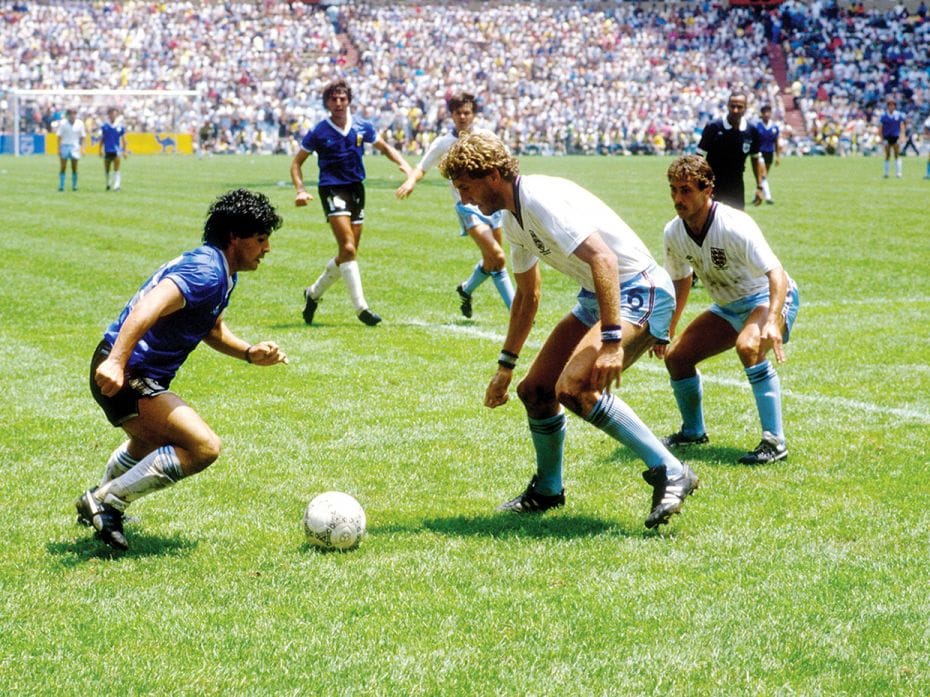
Image by : S&G/PA Images via Getty Images
1986
The bigger hand of God
In the 1986 World Cup quarterfinals between Argentina and England, the score stood at 0-0. A miscued clearance led the ball near English goal and a jumping Maradona adroitly used his left fist, rather than his head, to punch the ball home. The referee wasn’t wise to the grift and allowed the goal. Four minutes later, picking the ball up in his own half, Maradona dashed 60 yards in ten seconds, leaving four England players behind him, drew down the goalkeeper and netted one of the greatest goals ever seen on the world stage.
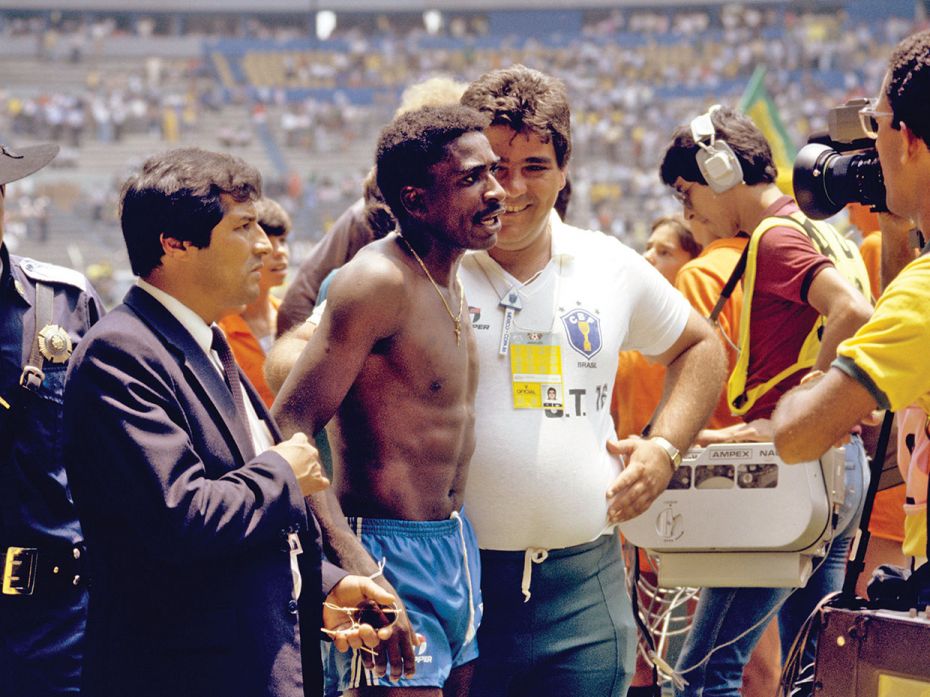
Image by : S&G / PA Images via Getty Images
1986
The two hit blunder
Josimar, an unknown right-back was cooking and looking after his pregnant wife when the call came, asking him to join the Brazilian squad in Mexico for the 1986 World Cup. He hadn’t played a game since mid-march. Against Northern Ireland, with four minutes to go before half-time and 30 yards from the goal, the formidably built Josimar put his whole being into a shot that swooshed past the goalie into the far top corner, a feat he would repeat four days later, against Poland. The fairytale turned cautionary with the downfall that besets folks with poor background: Booze, cocaine and womanising and soon Josimar’s career drifted to nothing.
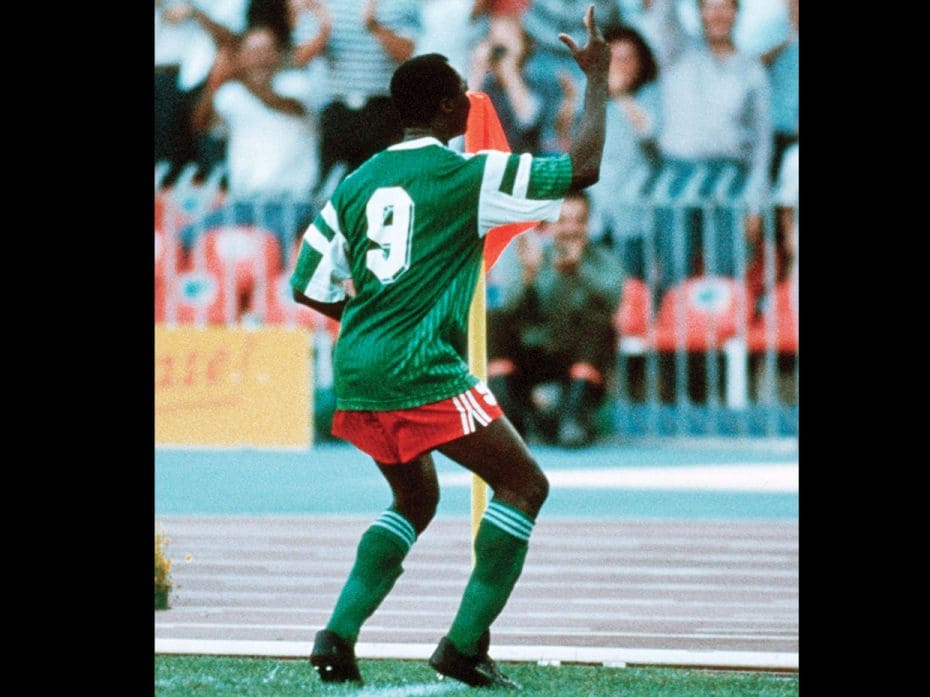
Image by : Henri Szwarc / Bongarts / Getty Images
1990
Hip dance sensation
Neither the players nor the coaches—who found him prickly and demanding and impatient—wanted the 38-year-old veteran Roger Milla back on the World Cup squad. But Cameroon’s President thought otherwise and issue a decree summoning him back. In the second match against Romania, Milla outmuscles Romanian centre-back Ioan Andone, almost falls over, before he springs and shoots the net. Then Milla does something that becomes almost as legendary as the goal itself. His joyful, hip-swinging corner-flag shimmy remains arguably Africa’s finest, and most vivid celebration on the pitch.
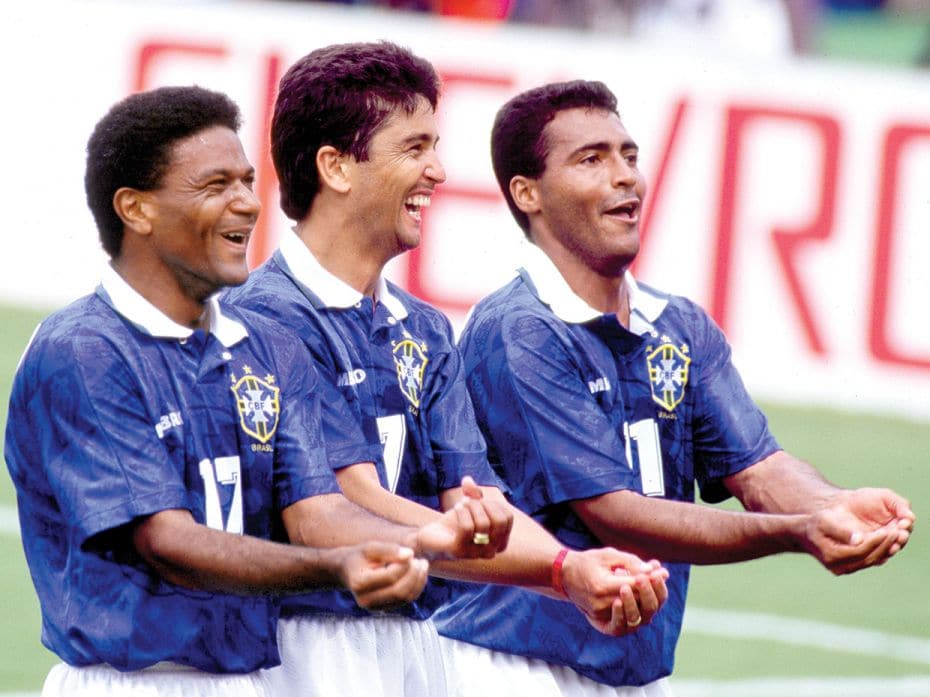
Image by : Mark Leech / Getty Images
1994
Rock the cradle
Two days before the quarter finals against Netherlands in the 1994 Cup, the Brazilian forward Bebeto had heard of the birth of his son Mattheus in Rio. After Bebeto scored to put Brazil up 2-0 in scorching Dallas, he raced to the sideline and rocked his hands back and forth, as if cradling a baby. Teammates Romario and Mazino joined in. Birthing a new gesture of celebration made Bebeto a household name
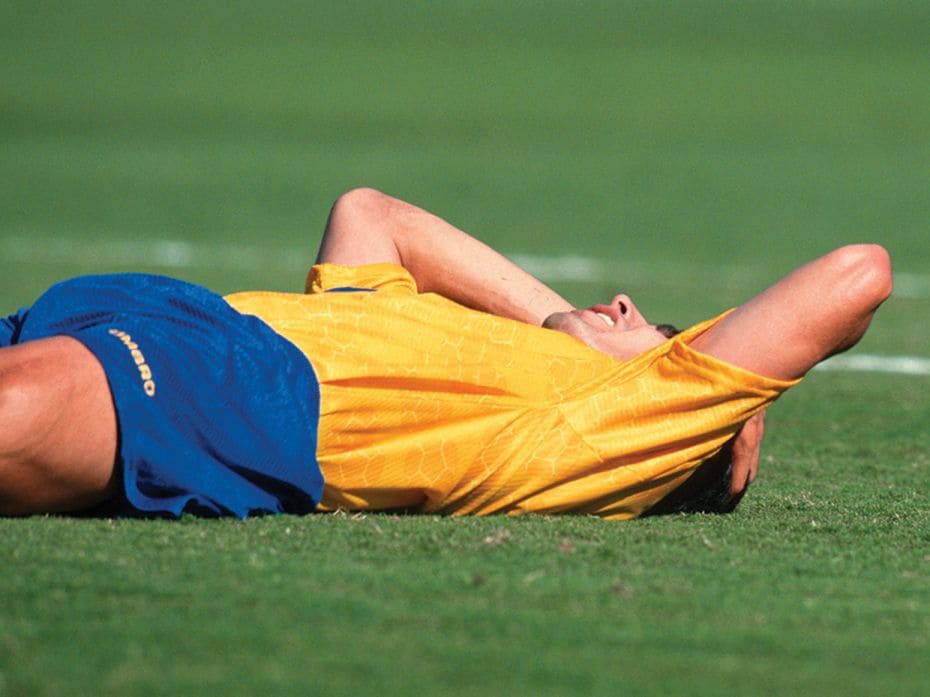
Image by : Mark Leech / Getty Images
1994
The other dead Escobar
Nicknamed The Gentleman, the Colombian captain and defender Andres Escobar was known for his clean style of play and calmness on the pitch. In the second group match against the United States during the 1994 Cup, Escobar stretched to block a cross and inadvertently deflected the ball into his own net, costing Colombia the match and an early exit from the tournament. Escobar returned home to Medellin. One night, he went out with friends, hit up a few bars and was alone at a car park when a group of men taunted him about the own goal, then shot him six times in the back, and left him for dead.

Image by : Chung Sung-Jun / Getty Images
2002
The non-duality of Korea
Upsets marked The 2002 World Cup, the first to be held in Asia. Korean fans who had gathered at Daejeon stadium for the last-16 clash between Italy and South Korea held up red and white cards spelling out the words “Again 1966” referring to Italy’s defeat at the hands of North Korea in 1966. A few minutes before extra time, South Korea’s Ahn Jung-hwan outjumped his taller opponent and headed the ball home to a 2-1 upset. Celebrations erupted in both Koreas, proving that North and South Korea might be separate and hostile political entities but when it came to World Cup history, the sense of patriotism was shared.
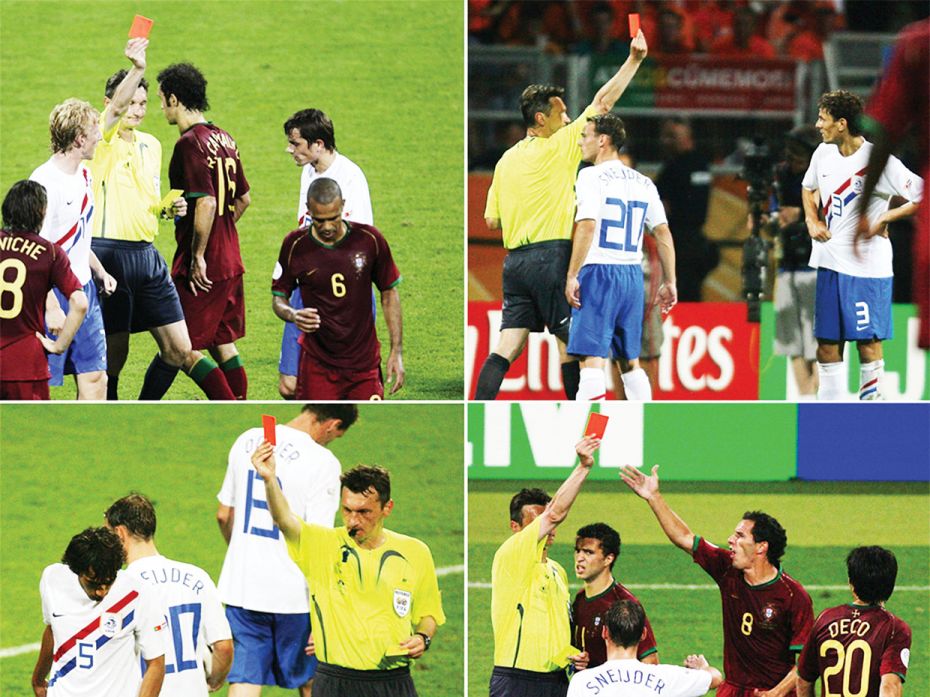
Image by : Staff / Reuters
2006
The Battle of Nuremberg
A sequel to the 1966 Battle of Santiago played out in the round of 16 clash between Portugal and Netherlands. As early as the second minute, referee Valentin Ivanov booked Marco Van Basten for a reckless challenge in a fiesta game that saw a World Cup record of four red and sixteen yellow cards issued.
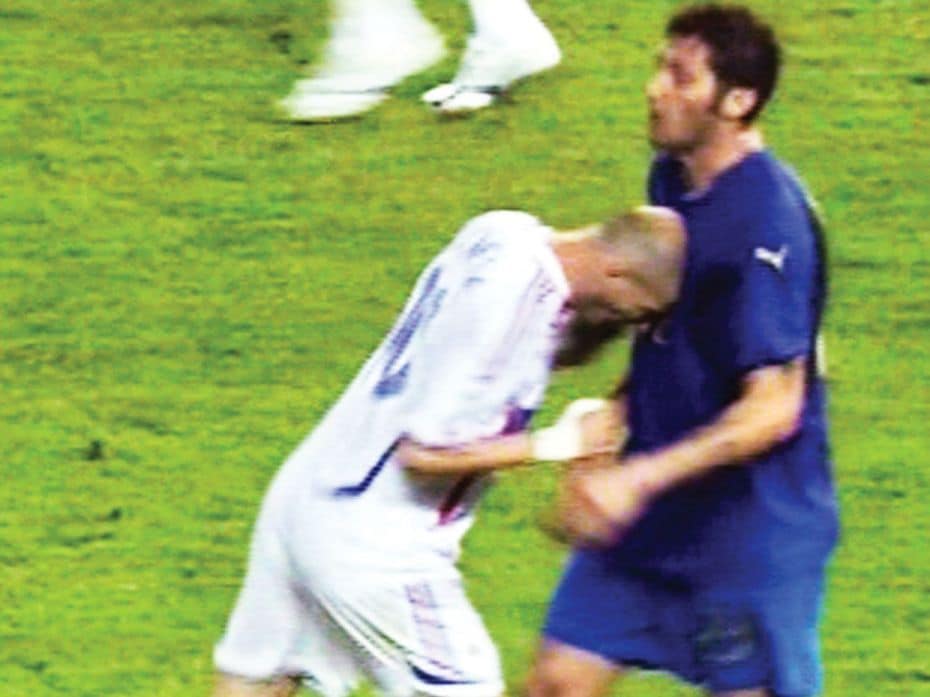
Image by : DESK / LCI / AFP
2006
In sister’s honour, a headbutt
“You can give it to your sister”. All it took was this remark by Italian Marco Materazzi while he gently brushed his hands across the Frenchman Zinedine Zidane’s shirt in the World Cup final. Zidane drove his forehead into Materazzi’s chest, this being his last action as one of the greatest footballers of all time, in his final game before retiring.
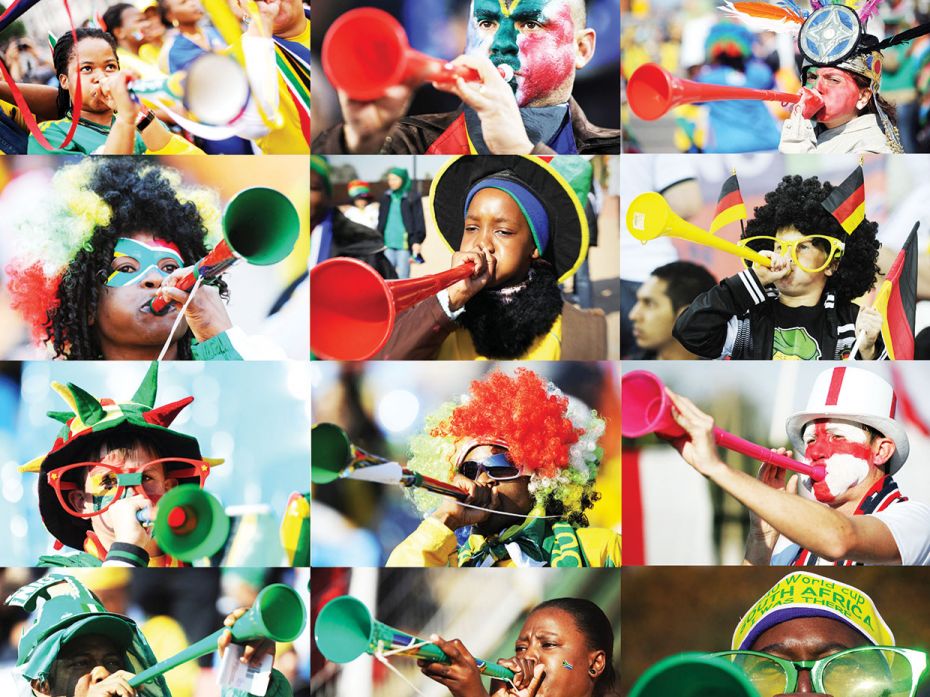
Image by : AFP
2010
A high-pitched buzz
The horn instrument vuvuzela invaded the pitch like no teams did at the World Cup in South Africa. The sound blown enmasse—described as a combination of fuzzy, squeaky buzz layered over a raspy hum—wasn’t to everyone’s liking. Critics remarked that vuvuzelas disrupted team communication and players’ concentration during matches. It led FIFA President Sepp Blatter to declare that Africa has a different rhythm, a different sound, adding “we should not try to Europeanise an African World Cup ... that is what African and South Africa football is all about—noise, excitement, dancing, shouting and enjoyment.”

Image by : Daniel Garcia / AFP
2014
A biting opponent, literally
The world witnessed Uruguay forward Luis Suarez bite Italian defender Giorgio Chiellini during a heated match at the 2014 World Cup. It wasn’t the only time though. Uruguay’s all-time leading goalscorer has, on two other occasions, sunk his teeth into opponents in professional matches. This has led many to ask an innocuous query on Quora: Does he have some kind of psychological disorder? In 2014, Suárez released his autobiography, titled Crossing the Line—My Story.
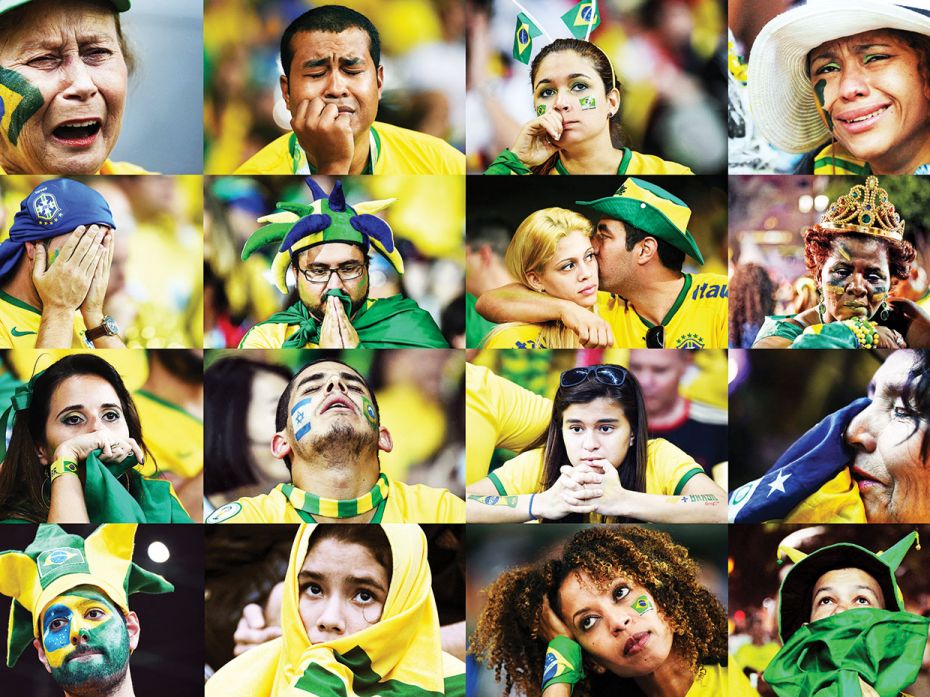
Image by : AFP
2014
A bloodsport without bloodshed
If there was any doubt that football isn’t a bloodsport, watch Brazil’s humiliation in its illustrious World Cup history as they were thrashed 1-7 by Germany in 2014 semi-finals. Brazil’s defence was pierced with such frequency and brutality that the German coach’s half-time team talk was about not making a fool of the Brazilians on their soil. It was Brazil’s first World Cup semi-final defeat for 76 years, and their first defeat at home in any competitive match for 39 years.
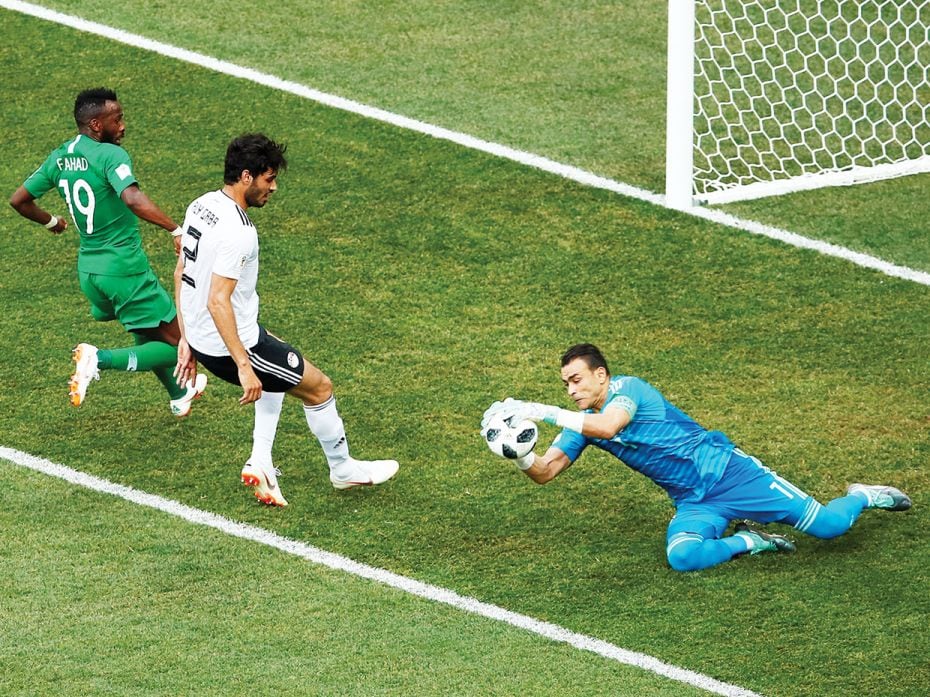
Image by : Jason Cairnduff / reuters
2018
Mid-life prizes
When 45-year-old Egyptian goalkeeper Essam El-Hadary lined up against Saudi Arabia at Russia 2018, he made record as the oldest player in World Cup history. El Hadary began playing football in his early teens, washing the mud off his clothes in a local river after a game to avoid his parents knowing. Spotted by a second division club at 17, El Hadary was handed goalkeeping gloves in his first training session. After making history in 2018, El Hadary donated the jersey and gloves he wore at the game to the FIFA World Football Museum in Zurich where it was displayed in the special exhibition “Foot et Monde Arabe”.
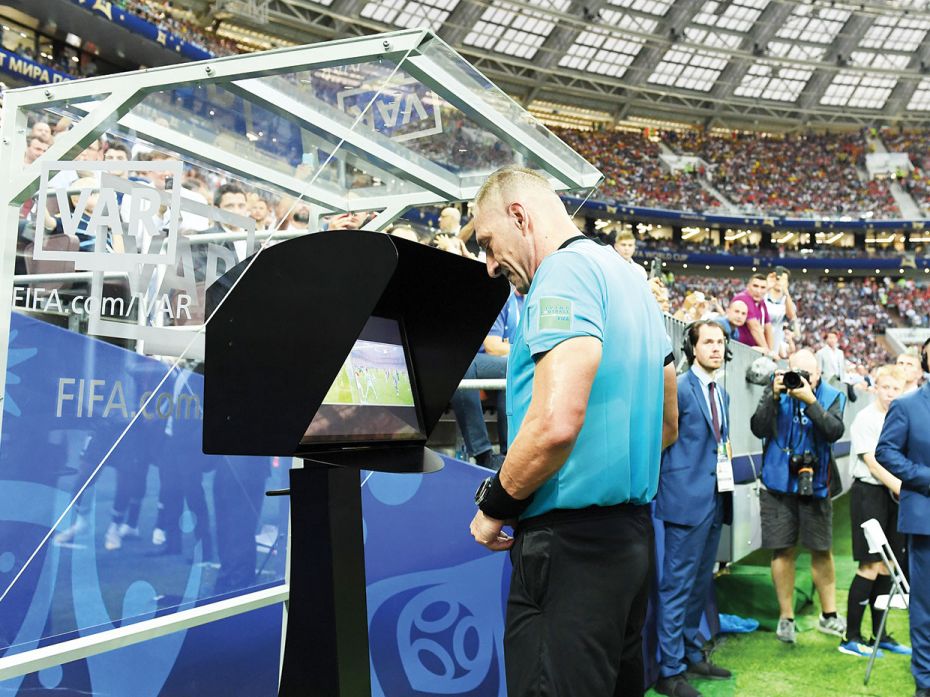
Image by : David Ramos FIFA / FIFA via Getty Images
2018
Turning to VAR
It was inevitable that the first World Cup to feature Video Assistant Referee (VAR) would turn to it at a pivotal moment in the final. Ivan Perisic arguably handballed the missed cross unintentionally near Croatian goal. The referee turned to VAR slo-mo replays, took awhile and awarded France a spot kick. France went on to win the Cup. Real time and slow-motion replays tell different tales. The talking point with the verdict is that the given decision may be in keeping with the letter of the law, but less so in the spirit of the game, well, sometimes.
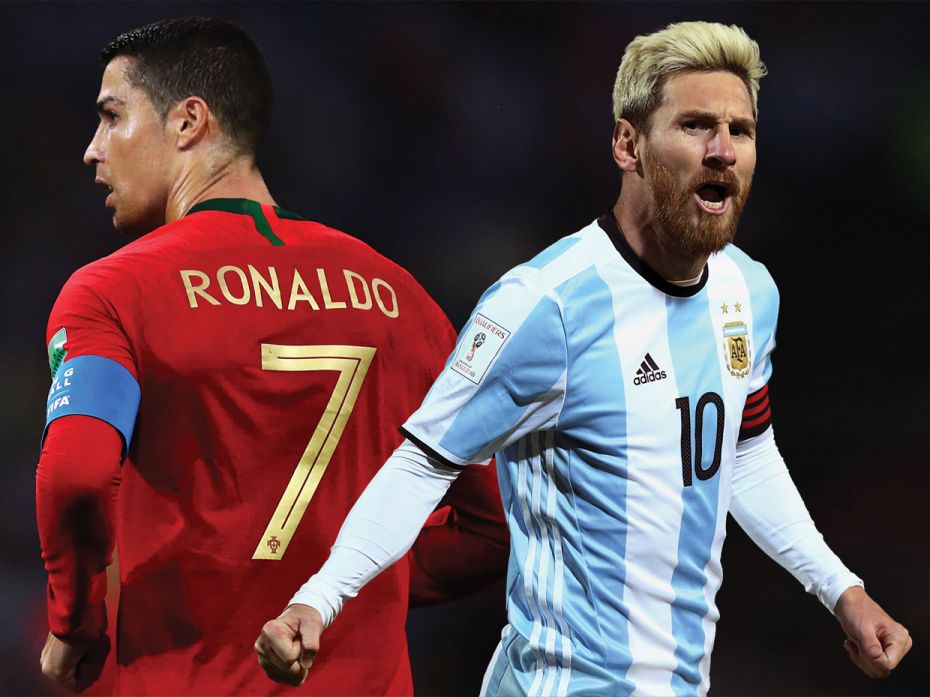
Image by : Dean Mouhtaropoulos / Getty Images, Marcos Brindicci / REUTERS
2018
What about Messi? And Ronaldo?
Expectations were high on two of football’s biggest stars, with Cristiano Ronaldo arriving after yet another UEFA Champions League win and Lionel Messi having starred in Barcelona’s LaLiga triumph. But the curse of the Cup lives on. Both exited the 2018 World Cup in the space of just four hours as the knockout stages kicked off with mighty shockers. Messi’s Argentina bid adieu after a goal-fest with France, before Uruguay edged out Ronaldo’s Portugal. So what will be their World Cup legacy?
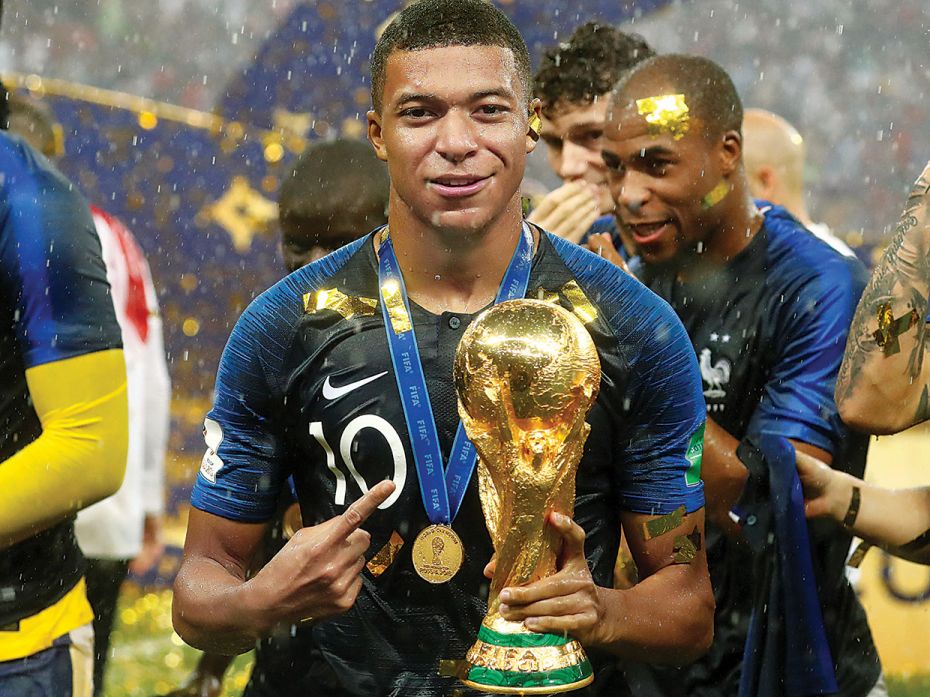
Image by : Kai Pfaffenbach / reuters
2018
The future was here and it was electric
France, the second-youngest team in the tournament captured the sport’s biggest prize in 2018. 19-year-old Kylian Mbappe’s blistering acceleration was electric, helping France win a thriller with a goal which made him the second-youngest player to score in a final after Pele. In the quarterfinal against Argentina, Mbappe had already matched another Pele feat by becoming only the second teenager to score two goals in a World Cup match. Hearing this, Pele tweeted “If Kylian keeps equalling my records like this, I may have to dust my boots off again.”





